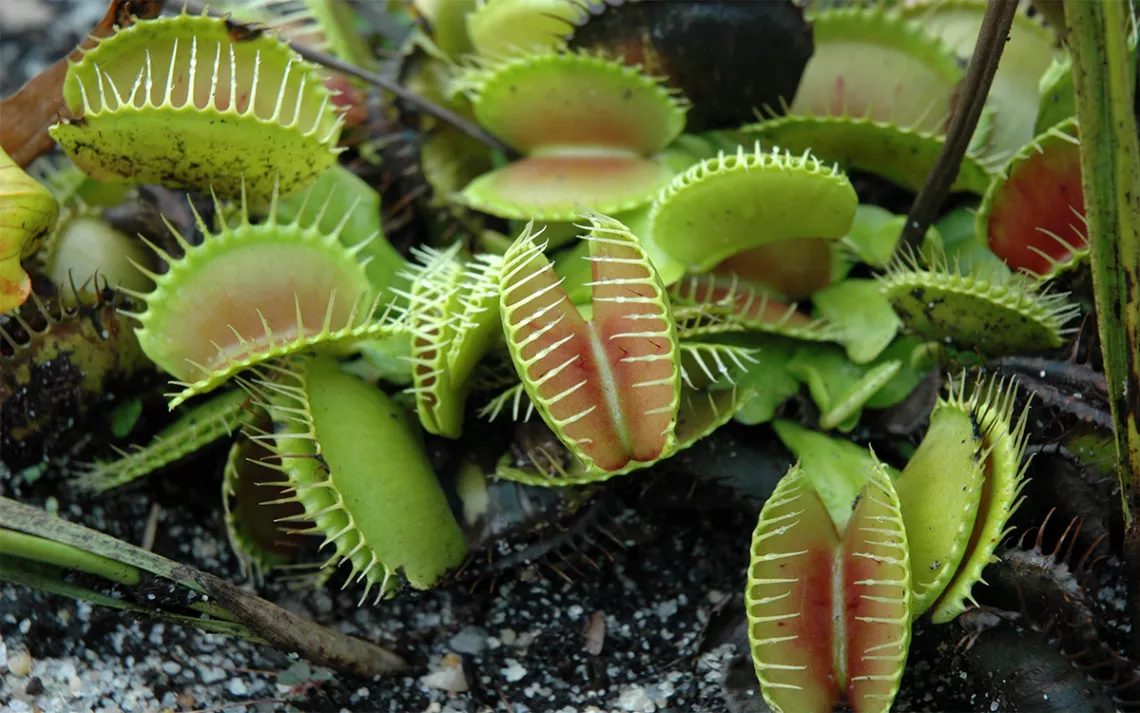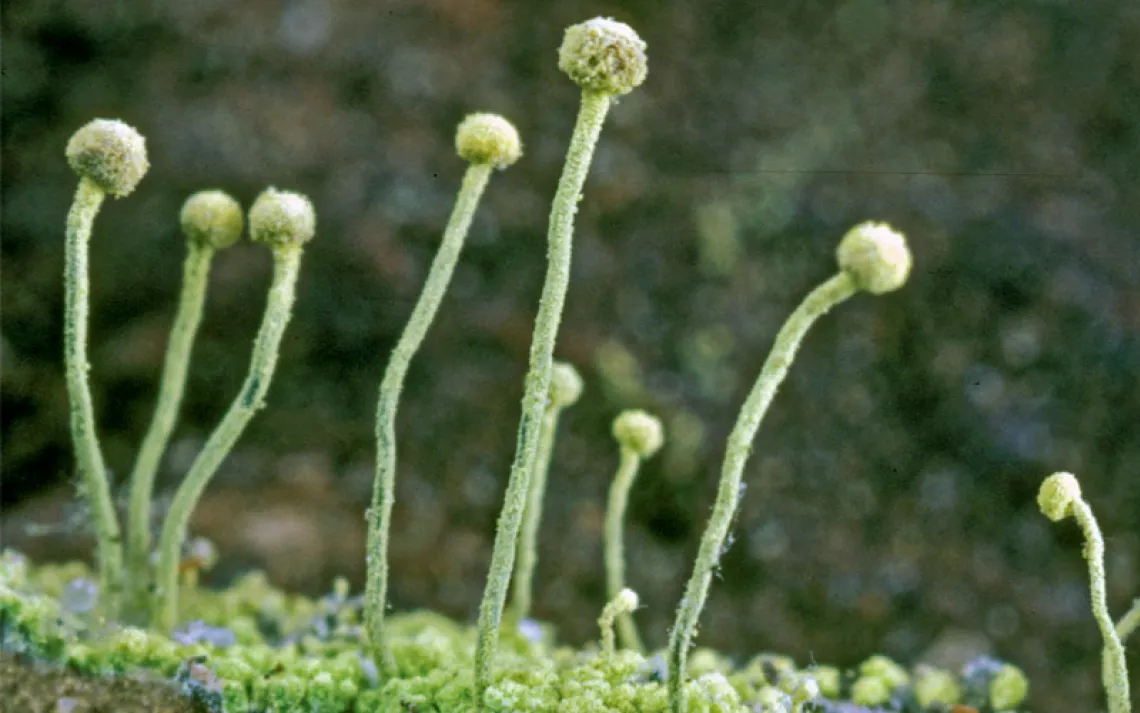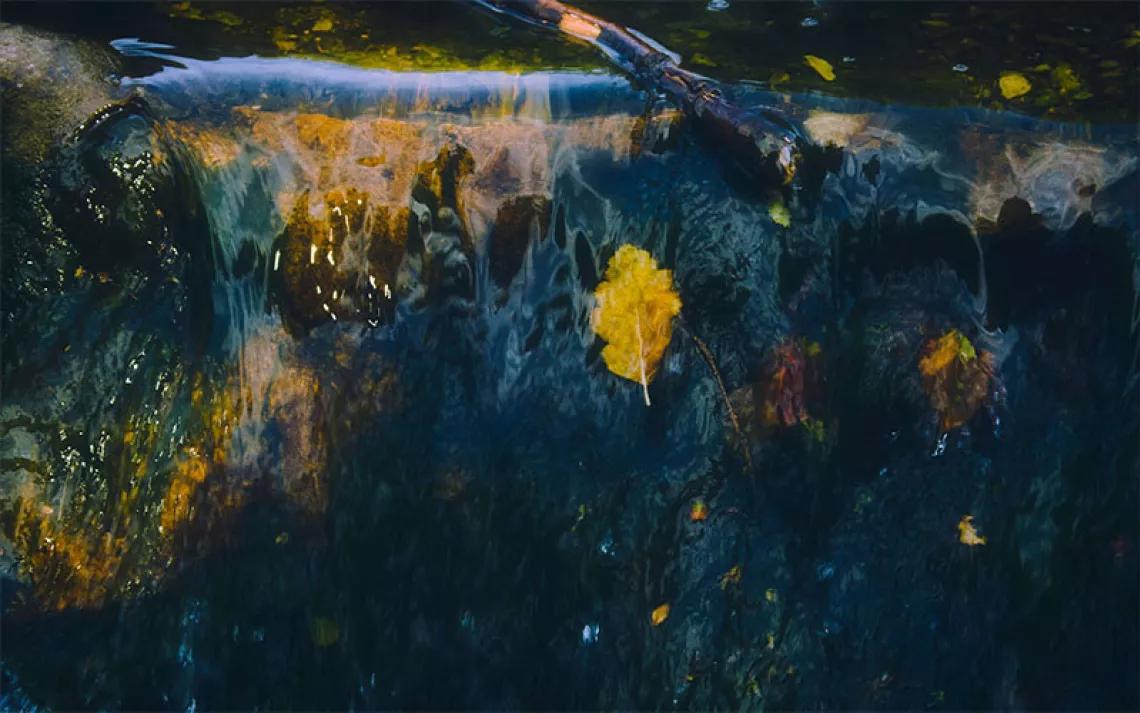The Captivating Venus Flytrap
While a common sight, the iconic plant is threatened in its natural habitat

Photo courtesy of the North Carolina Botanical Garden
It’s late spring, and the Venus flytraps are blooming in the marshy countryside near the Carolina coast, their white flowers jutting far above the plants’ business ends.
Their vividly pink and green spiny leaves lie close to the ground, waiting for a stray bug. Though it may look like something from a distant tropical jungle, the flytrap makes its home among the shrubs and wiregrass of this small stretch of Atlantic coastal plain in North Carolina and South Carolina. But this habitat is getting squeezed by population growth, years of fire-suppression efforts in the surrounding timberland, and poachers, who scoop up the popular commercial plant by the hundreds.
“They’re probably the most recognized plant in the world,” said Don Waller, a plant ecologist at the University of Wisconsin, who is pushing to get the flytraps protected under the Endangered Species Act. “Who can resist a plant that moves and can catch an animal?”
Venus flytraps and other carnivorous plants evolved in places with nutrient-poor soil, requiring them to find novel sources of sustenance. The flytrap’s clamshell-shaped leaves are lined with tiny hairs. When its prey bends one of those hairs, the leaves snap shut, trapping the bug so the plant’s digestive juices can get to work.
Despite the name, flytraps mostly subsist on spiders and crawling insects like ants and beetles. And the plant is a bit selective about what it eats: Researchers at North Carolina State University have found the Venus flytrap doesn’t consume pollinating insects that can help it reproduce.
Venus flytraps are widely cultivated artificially, but their natural range is extremely tight. About 90 percent of wild flytraps grow within about 50 miles of Wilmington, North Carolina, Waller said. That corner of the coast is growing rapidly—metropolitan Wilmington’s population is now nearing 300,000, up by about 40 percent since 2000—and development has been crowding out the “wet savanna” where the flytraps thrive, said Zach West, who helps manage the 17,000-acre Green Swamp Preserve for the Nature Conservancy.
Much of West’s work involves restoring the native longleaf pine forest, which was largely replaced in previous decades with faster-growing species for timber harvesting. He regularly makes use of controlled burning, which allows the flytraps to thrive.
“Flytraps rely on this open habitat, so that a lot of sunlight hits the ground,” he said. “Fire keeps a lot of that encroaching mid-story vegetation at bay and promotes a diverse understory.” And since the flytrap is a perennial that grows from a bulb underground, it sprouts again when the blaze has passed.
The conversion of natural pine ecosystems into plantations for commercial harvesting, where fire was suppressed, crowded out Venus flytraps in both North and South Carolina, Waller said. While there are still patches of native habitat in South Carolina, flytrap numbers there have been “crashing and burning."
The bulk of the plants remain in protected areas like the Green Swamp Preserve, North Carolina’s Holly Shelter state game preserve, and on large military installations like the Marine Corps’ Camp LeJeune, north of Wilmington.
“There are big protected populations, but some of these smaller populations are pretty susceptible to habitat loss,” West said.
Adding to the problems is an illicit trade in Venus flytraps that North Carolina has been targeting with tougher penalties in recent years. State lawmakers made poaching the plants a felony in 2014, leading to a high-profile bust of four men caught taking nearly 1,000 flytraps from Holly Shelter the following year.
North Carolina wildlife officer Fred Gorchess made the arrests. Acting on a tip about suspicious activity around the Holly Shelter preserve, “I stopped this guy going into the game lands,” he said. “It was starting to rain, and I just kind of knew the way he was acting was real weird.”
The man at the wheel of the minivan said he was there to take pictures. When Gorchess asked about his camera, the man said he wasn’t actually going to take pictures, just scout for a good place to shoot. Gorchess let him in, and when the minivan came out about 10 minutes later, “He stopped to talk to me. And when I walked up next to the driver’s side, I saw a guy trying to hide behind the driver’s seat.
That led to the discovery of the plants and two more men huddled beneath a blanket in the back. Three pleaded guilty and got probation; the driver went to trial and was found guilty, eventually serving a six-month prison term.
Despite the publicity around the busts, Gorchess said, the trade is being fueled by stories of the Venus flytrap being used as a miracle cure. It’s a common claim online, where it’s hawked as a treatment for everything from herpes to cancer despite warnings of deceptive advertising by the U.S. Food and Drug Administration.
“Every time you catch them, they get smarter in the way they do things,” he said.
All those threats have led to a new push to place the Venus flytrap under the aegis of the Endangered Species Act. Waller is the lead author of a petition to list the flytrap, which got a favorable first review in December.
It’s not clear whether the petition will clear its next hurdle. The U.S. Fish and Wildlife Service, which handles those petitions, has been averaging up to five years to make final decisions, Waller said—and it rejected the last attempt to put the plant on the endangered or threatened species list in 1993.
“Since then we think we’ve filled in the picture more,” he said. “We’re aware of how quickly the population has disappeared at several locations, and many of these smaller populations are not viable.”
There’s another complication: Flytraps are easy to transplant or clone from cuttings, so millions are grown in greenhouses and sold. But most commercially grown plants die on the buyer’s windowsill in a couple of months, Waller said.
“The irony is this plant is far more common in captivity than in the wild,” he said. But that “does nothing to protect a plant in the wild, and it’s only in the wild that this plant has any long-term future.”
 The Magazine of The Sierra Club
The Magazine of The Sierra Club







